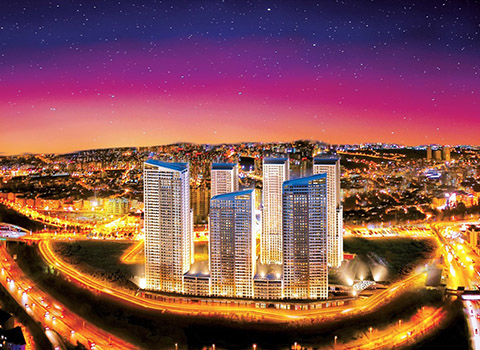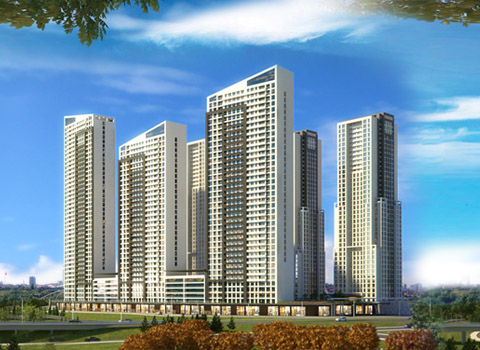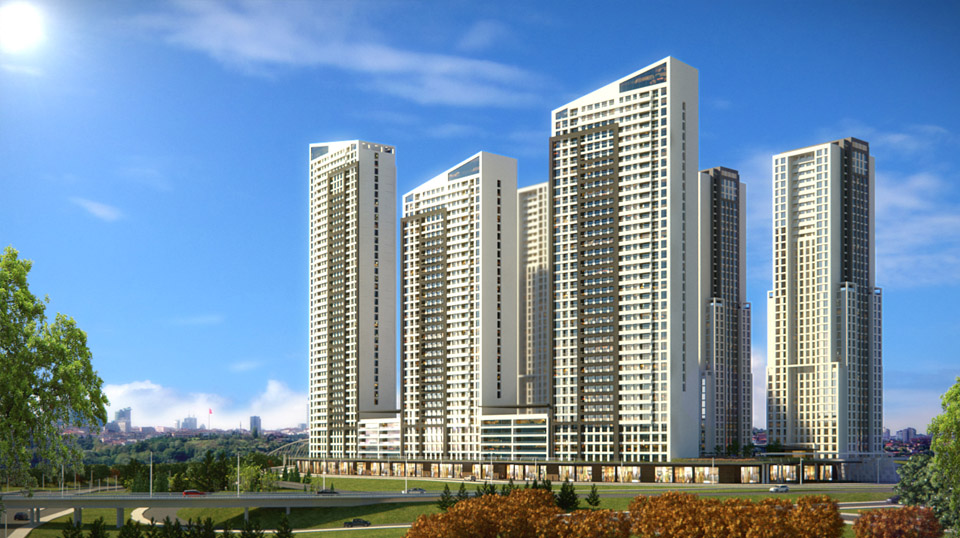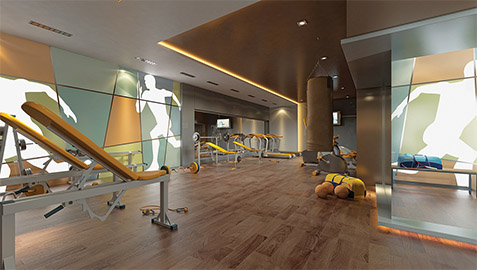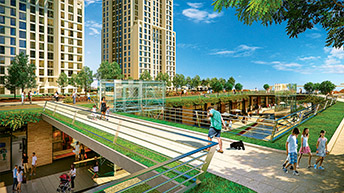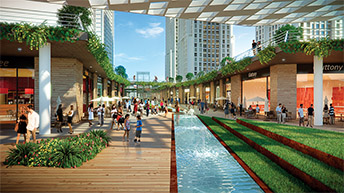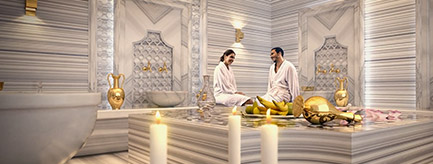-
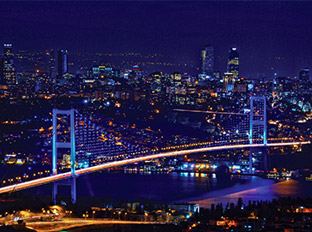
BOSPHORUS
Bosphorus is the most important natural beauty of Istanbul. From Kadikoy in the Marmara Sea in the south to Anadolu Kavagi and Poyrazkoy at the Black Sea north the Bosphorus offers visitors a wonderful view of seaside mansions, woods, hills, palaces and mosques. There are many ways to do a Bosphorus Cruise for different budgets and durations. A guided tour would be beneficial to not only indicate the places of interest but also the history behind them.
-
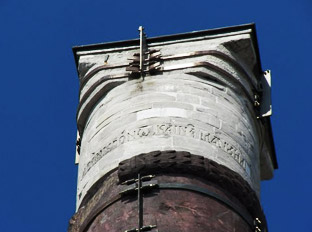
HIPPODROME
Hippodrome, the arena with the scenes of chariot races and also cultural focus of the Byzantine (Roman) Empire. Remains of the three of the great monuments can be seen: the Obelisk of Theodosius, the bronze Serpentine Column and the Column of Constantine. The square, with its surroundings, is like an open-air museum.
-
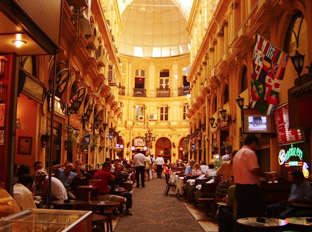
FLOWER PASSAGE
As Pera declined in the mid-20th century, so too did this building. Its once-stylish shops gave way to rough meyhanes where beer barrels were rolled out onto the pavement, marble slabs were balanced on top, wooden stools were arranged and enthusiastic revellers caroused the night away. These days its raffish charm is nearly gone and most locals bypass the touts and the mediocre food on offer here and instead make their way behind the passage to the bars and meyhanes on or around Nevizade Sokak.
-
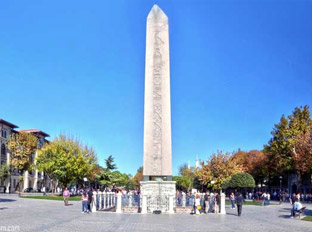
THE OBELISK
Around 1490 BC the Egyptian Pharaoh Thutmose III erected two obelisks before the Karnak temple in Luxor to commemorate the victories of his forces in Mesopotamia. The obelisks were made of rare pink granite. For years it was left lying in a corner of the Hippodrome. In 390, during the reign of Theodosius I, it was erected with great difficulty by Proclus, a city administrator. It is the oldest monument in the city and has always been considered magical. The obelisk rests on four bronze blocks on a Roman base decorated with reliefs. These depict the emperor, his children and other prominent personalities watching the races from the imperial box, as well as the spectators, musicians, dancers and chariot races. The obelisk measures 25.60 m including the base.
-

GALATA TOWER
Galata Tower is a medieval stone tower built by the Genoese trade colony representing Republic of Genoa in Italy. Geonese colony was settled in 1273 under the reign of Byzance until the conquest of Istanbul in 1453. The tower was built in 1348. During the Ottoman period the tower was used as an observation tower to spot fires in the city.
It is said that Hazerfan Ahmet Celebi flew from Galata Tower to Uskudar across the Bosphorus using wings attached to his body, he himself constructed.
-
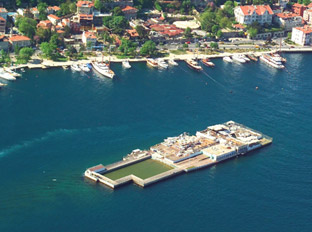
GALATASARAY ISLET
In 1872, Ottoman sultan Abdülaziz (reigned 1861–1876) granted the islet to the court architect Sarkis Balyan (1835–1899), who erected a three-story house on it as his own residence. In 1874, during one of his several visits to Istanbul, Russian painter Ivan Aivazovsky stayed in the mansion of Sarkis on the islet, and made here a number of paintings commissioned by the sultan for the Dolmabahçe Palace.
-
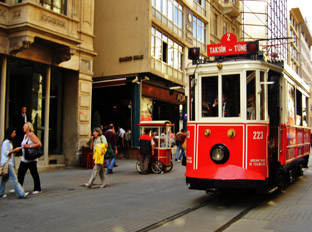
BEYOGLU
Beyoglu is where Istanbul's shopping, looking, eating, entertaining heart beats. It is a busy neighborhood day and night, cosmopolitan and at times chaotic. This is where you can find great food at decent prices, cheap beers as well as expensive dinners. It is also cultural heart of the city with movie theaters, art galleries and museums including the Pera Museum, the most important in Beyoglu and among top museums in Istanbul.
-
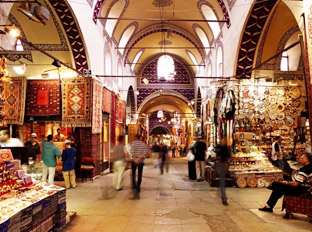
KAPALIÇARŞI
The Grand Bazaar (in Turkish Kapalicarsi meaning covered bazaar) is one of the oldest and biggest marketplaces in the world. It attracts both locals and tourists from around the world and is home to more than 3500 small shops under one roof. There are also a lot of restaurants where you can taste Turkish traditional foods when you need to rest.
-
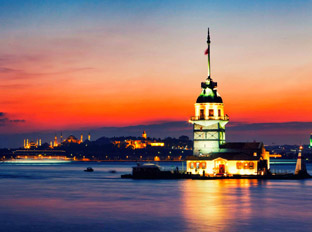
MAIDEN’S TOWER
A stone’s throw off the coast of Üsküdar, the Maiden’s Tower is one of Istanbul’s most instantly recognizable landmarks. It’s been a place of intrigue, legend and strategic importance since the city’s earliest days.Historical accounts mention the Kiz Kulesi as a toll station used by the Greeks as far back as the 5th century BC. The Byzantines used it to chain off the Bosphorus, and thus extract a levy on ships entering and leaving the Black Sea. And the Ottomans used it as a watchtower.
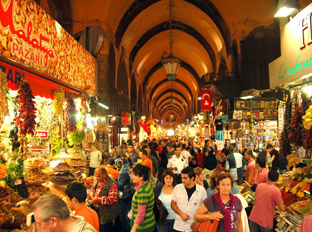
EGYPTIAN BAZAAR
The Egyptian Bazaar with its L-shape structure is located on the west side of the New Mosque (Yeni Cami). The year following the mosque’s construction, the "bazaar" section of the complex has been added by Mustafa Ağa, the head-architect of the Ottoman Palace. The main reason for it being called the “Egyptian Bazaar” is that it was built by the taxes collected from Cairo, Egypt. After the 18th century, this name began to be commonly used. The bazaar was originally called the “Valide Bazaar” or the “New Bazaar,” then it was later called the “Mısır Çarşısı” (Egyptian Bazaar). It has six doors total. The part near the Haseki Gate was designed as a double-storied structure and the upper floor also used as a court hall where cases between tradesmen and people were heard.
-
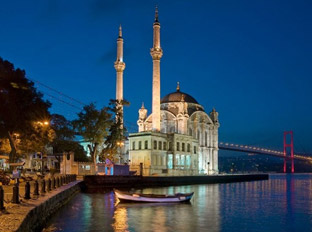
ORTAKÖY
Ortaköy (literally Middle Village in Turkish) is a neighbourhood, formerly a small village, within the Beşiktaş district of Istanbul, Turkey, located in the middle of the European bank of the Bosphorus.Ortaköy was a cosmopolitan area during the Ottoman era and the first decades of the Turkish Republic, with communities of Turks, Greeks, Armenians and Jews. Today the neighbourhood still hosts many different religious (Muslim, Jewish, Orthodox, and other Christian) structures. It is also a popular spot for locals and tourists alike, with its art galleries, night clubs, cafés, bars, and restaurants.
-
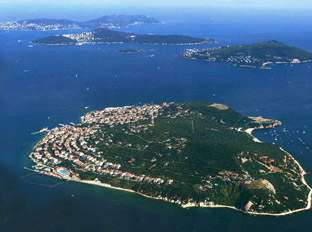
PRINCE ISLANDS
The nine small islands about 20 km (10.5 miles) southeast of the center of Istanbul in the Sea of Marmara (map) were called the Prince Islands by foreign chroniclers because of Byzantine emperors' practice of sending bothersome princes there to be blinded, exiled or executed, but today's citizens of Istanbul call them simply Adalar ("The Islands").
-

SULTANAHMET MOSQUE
It is located in front of the Hagia Sophia, in the Eminönü district of Istanbul. The architect of the complex is Sedefkar Mehmed Aga, who was appointed the head architect after Sinan the Architect’s death. The Sultan Ahmed Complex is one of the greatest complexes in Istanbul. Construction began with a big ceremony in 1609, and it was completed in 1616. The building is more familiarly known as the Blue Mosque because of its magnificent interior paneling of more than 20,000 blue and white Iznik tiles which include floral motifs. According to Evliya Celebi, the famous 17th centruy Ottoman traveler and writer, seven palaces were pulled down for this monumental structure. Being one of the last samples of the Classical Ottoman architectural heritage adds a different value to the complex.
-

TOPKAPI PALACE
Topkapi Palace which is located behind the Blue Mosque and Hagia Sophia should be at the top of your places to see list in Istanbul! It embodies the ultimate Ottoman architecture, treasures, culture and relics, it has very beautiful gardens and is located at the entrance of the Boshorus, hence amazing views of both the Bosphorus and the Marmara sea.
-
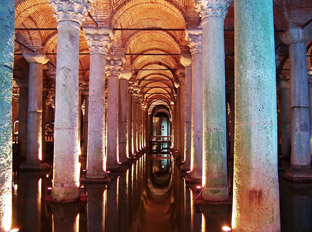
THE BASILICA CISTERN
The Basilica Cistern, located in the crowded Eminönü district of Istanbul next to the Hagia Sophia, was built to provide water for the city of Istanbul during the reign of Emperor Justinian I in the 6th century CE. This cistern is an underground chamber of 138 x 64.6 metres. The large space is broken up by a forest of 336 marble columns, which are aesthetically supported by strong columns and arches. The ceiling vaults, known as Manastır Tonozu (cloister vault), are built without using a mould. The cistern is surrounded by a firebrick wall with a thickness of 3.5 meters and is coated with a special mortar to make it waterproof.

